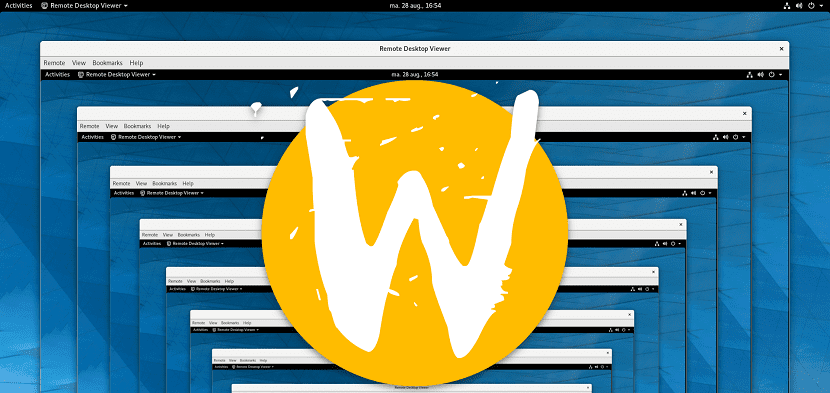
Wayland is a graphical server protocol and library for GNU / Linux, Wayland provides a method for window composition managers to communicate directly with video hardware and applications.
It is expected that communication with input hardware using other libraries will also be possible.
The applications render the graphics in their own buffers and the window manager becomes the graphics server, composing these buffers to form the on-screen display of the application windows.
This is a simpler and more efficient approach than using a window composition manager with the X Window System.
Existing window composition managers, such as KWin and Mutter, are expected to implement support for Wayland directly, to become Wayland composers / graphics servers.
Apparently, the development of the core of Wayland's display architecture has progressed so much that the responsible team wants to move away from regular publishing.
According to the current version 1.16, new versions could only exist if they were necessary.
For about ten years, Wayland has been developing a display server architecture that aims to replace the X server in the long term as a modern alternative and is already being used as a standard.
Su main objective it was a system in which «every frame is perfect, I mean that heapplications will be able to control the rendering just enough so we never see tearing, lag, redrawing, or flickering. "
Wayland is free software. The libwayland-server and libwayland-client libraries were released under the MIT license and the demo composer originally under the terms of the LGPLv2.
It was planned to change the entire project to the LGPLv2 license, but this did not happen and the entire project currently uses MIT license.
Wayland development slower and slower
The core of the work is the eponymous Wayland protocol and its implementation as a library, which is used in parts for the client and server components of the new graphics architecture.
To release the current version 1.16 of Wayland, Launch manager Derek Foreman writes that this is probably the latest version to be released on a regular basis.
So far, the project has released new versions every six months, despite the fact that the developers have not always been able to meet this schedule.

Parallel to this, the reference implementation of the so-called Wayland Composer, Weston, appeared. However, Samsung employee Foreman now writes that, in his opinion, the Wayland and Weston versions should be separated in the future.
In the email, he writes that Wayland:
"Should be published as needed for major fixes or major changes."
“Right now, I don't see the need to plan a next Wayland post. However, if there is no version, as we get closer to the next major Weston version, we can see what has landed in the code and decide if a version is needed.
The reason for this idea appears to be the slower development of this central part of Wayland's display architecture, which only has a few new features and profound changes.
Additional work refers primarily to Weston or the additional protocol collection in the Wayland Protocols package.
At the moment nothing has been confirmed yet, but if so Could it be bad news or good news?
If we look at it on the bright side, Wayland releases will no longer be "forced" so to speak, as the developers would be delivering an improved and more polished version of Wayland.
Where these releases will be whenever major problems are solved.
On the other hand, if we think about it a little more, what the person in charge argues, suggests that the development of Wayland would be left adrift and it would simply be receiving a necessary "maintenance".
Even though nothing is confirmed yet, it remains to be expected what comes up and how this impacts the distributions that plan to work with Wayland, such is the case of Lubuntu.